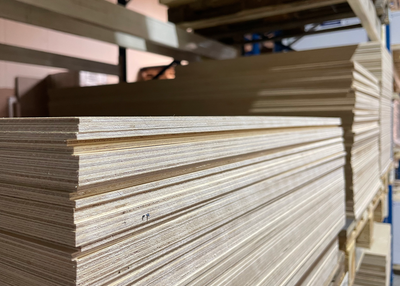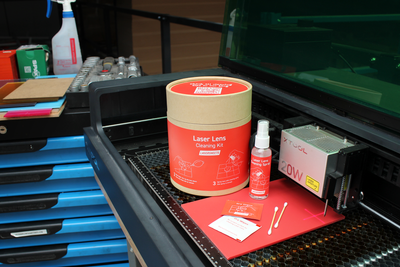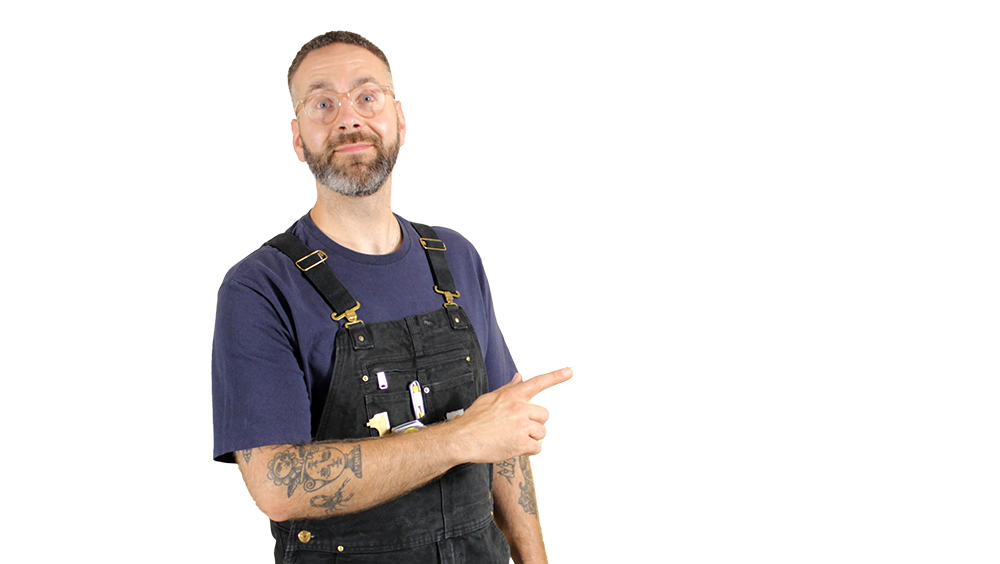The makers of LightBurn promise a powerful, intuitive, and complete solution for controlling your laser machine. But how good is this software in practice? At Lasersheets, we use various machines daily and have extensively tested LightBurn. In this review, we share our honest findings: what works well, what are the pitfalls, and who is this software worth the investment for?
What is LightBurn?
LightBurn is software that controls your laser cutter and sends drawings to your machine. It's an alternative to the standard software often included, such as LaserCAD, RDWorks, or EZCad. LightBurn promises to be better than all these packages, and we've tested it extensively. Read our review to find out what we think.
Why standard laser software often falls short
Software like LaserCAD and RDWorks works well for the basics: open a drawing, enter settings, and send your file to the laser. But as soon as you want to use advanced features, you quickly run into limitations. While functions like join lines , offsets , and arrays are available, they're often clunky or cause errors in practice. The unclear translations don't make things any easier.
For beginners with simple projects, standard software works fine. But once you're lasering more often and want to get more out of your machine, LightBurn offers a much more powerful alternative.
LightBurn Laser Compatibility
LightBurn is compatible with multiple laser machine brands. If your laser uses a Ruida, Trocen, or TopWisdom controller, or a GCode-based controller, LightBurn can work with it.
In practice these are:
- Almost all Chinese lasers ( Gweike , Vevor and all kinds of no-brand machines)
- Most diode lasers (Xtool, Sculpfun, Ortur, Omtech, FLUX, Creality and others)
- Galvo lasers that operate on EZCad (CO2, UV and Fiber lasers)
- BRM lasers
- LionLaser machines
- MetaQuip lasers
- LaserPecker
- And much more
LightBurn is not compatible with:
Versions are available for Windows, macOS, and Linux.
Cost of LightBurn
LightBurn isn't free. You purchase a one-time license per machine that remains valid indefinitely. If you have a G-code-based controller like most diode lasers, you can use the Core license for €103.95. Otherwise, you'll need a Pro license for €208.95 (price as of July 2025).
You can use LightBurn for 30 days for free to test whether it is compatible with your laser and whether you think it is worth the money for your production.
How did we test LightBurn?
Lasersheets also offers its own laser service, Snijlab. Snijlab has been a household name in the Netherlands for 15 years, cutting dozens of projects for clients daily. We use four SPOTminis (custom machines with Trocen controllers), an AEON laser, two Galvo lasers, and an Xtool diode laser.
The right software is crucial for our production process. It not only determines our efficiency, but also how quickly we can find the right settings for each material. Before (spoiler alert) fully switching to LightBurn, we first researched the features and ran a trial run. That was a success. We then trained the entire team in using LightBurn.
We've tested LightBurn extensively on various machines in a professional production setting. Since switching, we've been working with this software every day with great pleasure. We've also used the LaserCAD and EZCAD software ourselves. uninstalled from our machines.
While we're positive on almost all counts, there are a few areas of concern. Read on to discover what we think makes LightBurn so good, and where we believe there's still room for improvement.
Design and CAD functions
LightBurn isn't primarily intended as design software. Typically, you design in CAD software like Illustrator, CorelDraw, Autodesk Fusion360, SolidWorks, or similar programs. You then export your files and open them in LightBurn. There, you set the speed and power of your laser and send your file to the machine.
All laser software has drawing functions, but they're usually so limited that they're practically unusable. LightBurn is significantly better in this regard. It has, among other things:
- Snap to object and snap to grid
- Guidelines
- Auto join and break apart function for vectors
- Node editor
- Tabs
- Smart boolean functions
There are also several laser-specific tools that simplify work. For example, you can intelligently scale slot connections, vectorize bitmaps, and even nest them in various ways to save material. We found all these features powerful and a pleasure to work with, unlike similar features in LaserCAD that work poorly or have flaws.

Material library
Our favorite feature is the settings library. You can save multiple settings for each material for cutting and engraving. The next time you need that setting, you can load it with a single click.

We think the input fields could use a bit more structure. For example, we're missing fields for the type of processing (cutting or engraving), the application, air pressure, and notes. You can currently enter this in the description field, but everyone can enter it slightly differently. If you work with multiple people in the same library, it's helpful to make agreements about this to prevent things from getting messy.
We do it like this:
- Material name: material name
- Thickness: On in cut settings, off in engraving settings
- Title: leave blank
- Description: Editing type - Application - Air pressure - Notes
Tip: If you use multiple lenses, create a separate library for each lens. When you change the lens in your machine, you also load the other library into LightBurn. This is more organized than having everything mixed up.
Tip: In addition to a material library, there's also an artwork library . Save all your frequently used vector files here for super-fast access.
Kerf offset in layer settings
If you want parts to fit perfectly, you need to compensate for the cutting width. But this needs to be done correctly: inward for holes and outward for contours. Many software programs allow you to do this by clicking on each shape and creating an offset , but that's a lot of work. Moreover, the offset varies by material.

The solution in LightBurn is much better. In the Layer settings of your material, you specify the kerf offset , and LightBurn does the rest. Not only is this less work, but it's also saved directly to your material library. So the next time you use the material, everything happens automatically.

Tip: Want to easily determine your cutting width? Use this tool : Kerf Offset Test
Sublayers
Some engravings or workpieces require multiple edits. For example, a plane engraving will have sharper edges if you place a line engraving along the contours. You can expand a layer in LightBurn with sublayers . These are additional edits under a single layer /color in your drawing. This allows you to manage and save complex edits clearly.


Keyboard shortcuts
If you really want to work fast, you'll need to learn keyboard shortcuts. Our favorite: ] and [ to rotate a selected object 90 degrees!
Camera alignment
Your laser doesn't have a camera? You're missing out! Luckily, you can use any USB webcam in LightBurn. Simply attach the camera to your hood so it can take a picture of your entire workspace. Then, use the camera calibration wizard ( Camera Alignment ) to align the image with your workspace in LightBurn.
Now you can use all the handy features a camera offers:
- Aligning engravings on objects in your laser
- Align cutting work on residual pieces
- Precisely cut printed materials
- Rescue interrupted and shifted cutting work
Below you can see an example of the Camera alignment screen.

Trace Image
For laser cutting, you need vector files; pixel files must first be converted. No matter how experienced you are in CAD, it often remains a barrier if you want to create something nice "quickly," or if you simply want to laser cut a specific artwork. LightBurn has a built-in tracing function that can convert bitmaps to vectors. This function works well and rivals Illustrator or Vectorizer.ai . It's convenient that it's built-in and doesn't cost extra.
Tip: Check out this YouTube tutorial on converting a pixel image to a vector file in Lightburn
Docking and Nesting
The Docking tool slides selected objects left, right, up, or down, to the edge of the workspace or when they touch another object. Docking brings objects together or moves them together, keeping their relative distance from each other constant. This is a useful tool for efficiently using space and materials.
LightBurn doesn't have built-in nesting, but you can use Nest Selected to create an SVG, upload it to svgNest.com, and then re-import it.

Slot resizing
This feature feels like pure magic. Do you have a drawing with slots (finger joints), but want to use a different material? Normally, you have to manually adjust all the slots to the new plate thickness. With the With the slot resizing function, you no longer need to! Adjust all slots in a drawing at once.
Documentation
Last but not least, the LightBurn docs are a treasure trove of information for laser owners. Not only does their documentation clearly explain how the software works, but you'll also find plenty of information on settings, troubleshooting, and helpful tricks. Clearly written, with good pictures and videos.
Conclusion
So what do we think of LightBurn? You've probably already noticed: we're enthusiastic. All the basic functions are well-thought-out and well-executed. It's clearly designed by people who do a lot of laser work themselves and want a good tool.
The material library alone is worth the upgrade in our opinion. There are so many handy features that you'll quickly save time and get better results from your laser. The downside is that it's expensive and doesn't work on all machines, such as Trotec and Universal . But if you have a compatible laser, we recommend giving the free trial a try.







